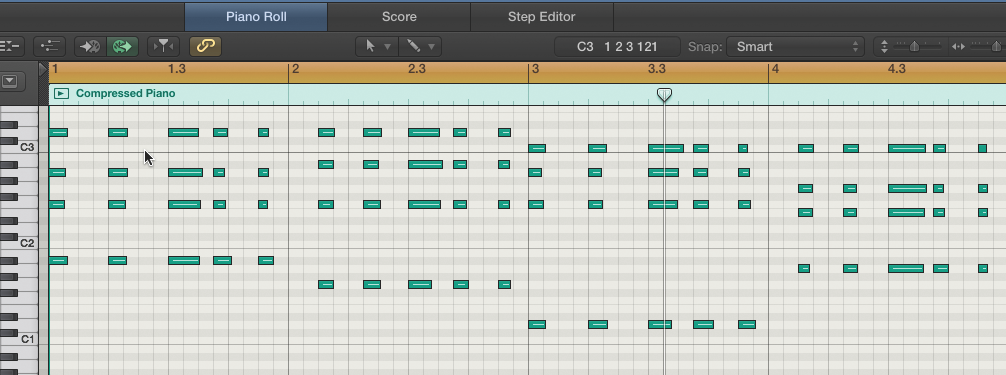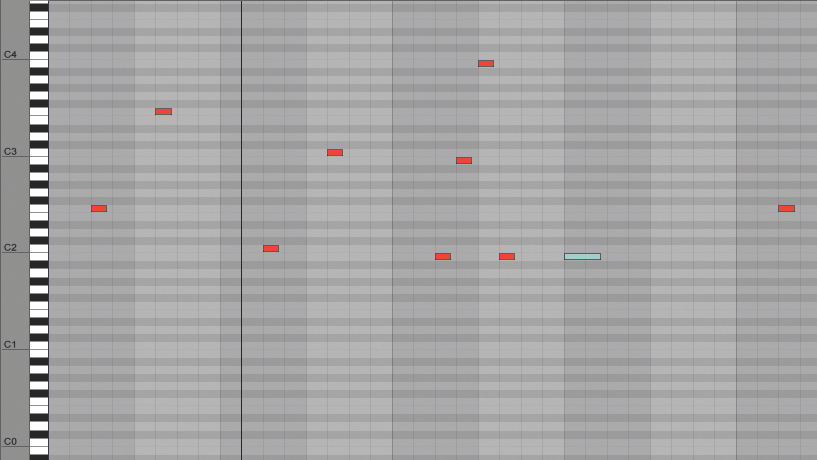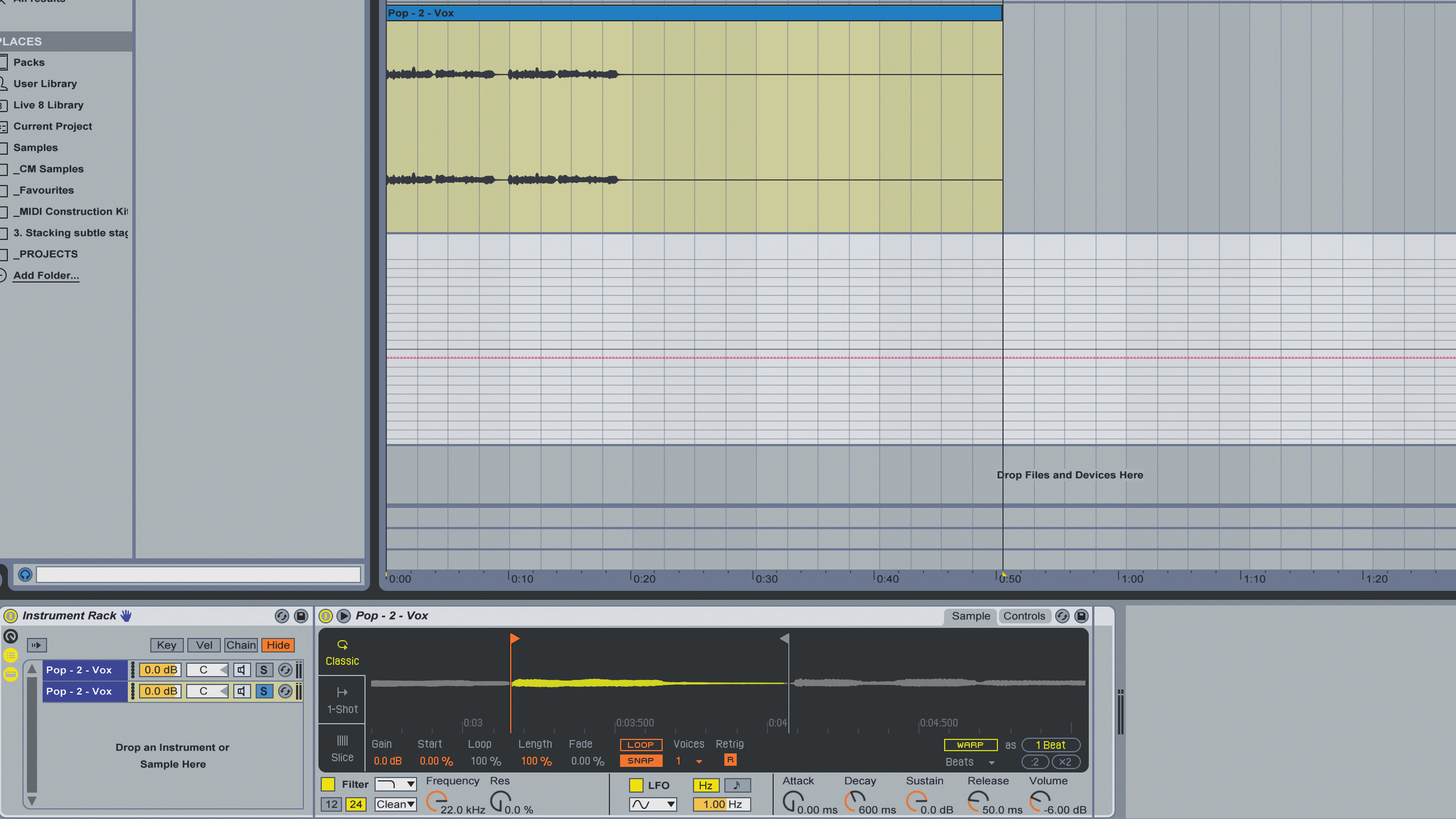16 quick-fire ways to come up with a hook
Every hook is different - will one of these effects be the silver bullet for your next catchy motif?

Intro
How do the professionals make their tunes so damn catchy? In truth, it's a mixture between practice and luck… but you can tip the odds in your favour with a bit of inspiration. With these 16 tips, we'll give you more than enough techniques to try out whenever you're fresh out of ideas.
For more inspiration and techniques for writing hooks, pick up your copy of Computer Music 240.

1. Use rhythm and repetition
So that they stick in the listener’s brain to keep them coming back for more, hooks generally need to be short and easily repeatable. Throughout the history of pop music, its repetitive nature has often been a target for criticism, yet it’s exactly this that helps to hammer a hook home so that the song endures.
The key is to use the right amount of repetition, so that it does the job without crossing over into being annoying. If you can tap into a rhythmic feel that’s the kind of thing you might hum while walking to the shops for a loaf, then so much the better. The “Bam bam be dam bam bam be dam dam” hook in Rihanna’s Disturbia is a good example of this idea.

2. Hold the flow with a melisma
Stretching a word or single syllable out over multiple notes is known as a melisma, and it’s a technique commonly found in pop music. The most widely-known classical or folk example is probably the singalong “Glo-o-o-o-o-o-o-o-o-o-o-ria” chorus from Ding Dong Merrily On High, but there are many more recent examples from the field of popular music.
Annie Lennox, for example, wondered “Why-y-y-yy-yy-y-y-y”, and Bruno Mars is another guy who likes a good melisma (“24 carat magic in the ai-i—i-i-ir”). While you’ve still got to fill in the notes for your melisma, you won’t need to come up with too many lyrics!

3. Overlay multiple hooks
Why stop at one hook? Here’s a way to combine multiple ideas into one overarching theme that hits your listener from multiple angles…

Step 1: Sometimes you can combine short, rhythmic hooks and long, flowing ones to great effect. Our example piece is just drums, bass and keys at this stage.

Step 2: Now let’s hook it up with a funky, rhythmic vocoder chant, singing “Yeah, we just wanna rock with you”. The rhythm dovetails nicely with the piano part, and the vocoder is a blend of two sounds, each triggered by a version of the pad part.

Step 3: Now we add a long, flowing melody, played here by a synth, but which would ordinarily be the kind of part that would be sung by a vocalist. The long notes float over the top of the vocoder chant, ascending gradually without getting in the way of things. Double hooks!

4. Beat out some tonal percussion
Club-destined underground genres such as tech house and techno usually forfeit obvious lead melodies, full-blown vocals and instrumentation. Instead, simple percussion riffs and atonal ‘call-and-answer’ sounds are sequenced to create raw, rugged, driving drops.
For a popular minimal house trick, start with a tuned electronic percussion hit such as a clave or 808 cowbell – this can either be a drum sample loaded into a sampler, or synthesised using any synth – then lay down a hyper-basic, hypnotic riff that works nicely over a simple beat-and-bass groove, forming the core melodic focus of the drop in the absence of a traditional hook.
To make the percussion lead’s pitch rise or fall during key sections of an arrangement, assign the sample’s pitch to a MIDI knob, then record in unusual variations on the fly. Also assign other insert effects’ parameters such as reverb time and ping-pong delay feedback to MIDI dials for further intensity-swelling potential.

5. Inject drama with cinematic percussion
Want to add an epic Hollywood feel into your tracks? Then try out cinematic percussion as your main hook! Fire up an epic movie drum sample library, reach for your MIDI drum pads, then bash out a raucous rhythm of timpani drum hits, booming bass drums, crashing gongs and tension-building toms. Limit and sidechain the hits to fit them with your kick and snare, and layer a simple sine wave or 808 sub underneath to fill out the bottom end.

6. Get primal with tribal percussion
Nothing is as primal, driving or relentless as a melodically-sparse drop crammed with drum rhythms. Many styles of house, techno and electronica take inspiration from tribal, African and Brazilian grooves, so for a feel similar to tracks such as GotSome’s Zulu or Mele’s Ambience, have a go at making a hook from a montage of bongos, congas or toms.
Program one-shot samples, chop up and rearrange loops from sample packs, or even grab a mic and record your own percussion! If there’s a drum hit you use repeatedly in the riff, copy it to a new channel and make subtle variations – reverse, filter, modulate, you name it!

7. Pay attention to the spaces between the notes
Sometimes, the space around a note is just as important as the note itself – and this is especially important when programming riffs. By making the notes of a riff very short, you’ll draw more attention to its rhythmic interplay, and how the melody interacts with the track’s drums, adding more emphasis to the overall groove and creating more space in your mix.
Extending a few notes in the riff by just a small amount will have a massive impact and add much-needed contrast. Use effects such as delay or reverb with a short feedback/decay time to add subtle ambience between the notes without messing up the carefully-constructed groove; and add a crescendo by automating up the synth’s amp envelope release time, swelling the synth open before a breakdown or at the end of a 16-bar section.

8. Add an extra layer of snap
Need to give a synth hook more punch and impact? Try layering a sharp transient over the start of each note. To prevent transient collision in the mix, use the punchy elements that occur at the same time (kick, snare, hats, etc) to trigger sidechain compression on the transient layer – dial in a fast attack and a slightly slower release for around 6dB of invisible gain reduction.
Create your own attack layers with short bursts of synthesised white noise – or check out SampleRadar to get your fill of transient one-shots.

9. Stutter up a unique vocal hook
Step 1: Stuttering sampled vocals are a dance music staple. To begin, load a vocal sample into your sampler , then add a little performance reverb and delay via sends – we’ll use Ableton Live 9’s built-in effects, any will work.

Step 2: Set the sampler’s amplitude envelope Release time to 8ms, This keeps the release tight when a note stops. Play a riff in via a MIDI keyboard: by jamming in short 16th-notes, we can repeat just the start portion of the vocal for a st-st- stuttering effect!

Step 3: Finally, we add some variations at the end of the phrase by programming a longer MIDI note, triggering the entire length of the vocal phrase for variation. We also push the delay send amount up during this longer segment for spatial ‘bloom’ and impact.

10. Craft a filthy bass hook
There’s one kind of hook that’s guaranteed to screw up faces and unite a dancefloor: a fat, filthy synth bassline! In fact, genres like drum ’n’ bass, UK garage and bassline house almost entirely rely upon a simple-yet-catchy bassline doing its thing over a supporting beat. A prime example is DJ Hazard’s Bricks Don’t Roll, a modern DnB anthem guaranteed to get a whole rave singing along.
When a bassline is the only main melodic element of a track, it has to work musically and rhythmically – spend plenty of time refining the timing and pitch of your notes to create a catchy bass hook that fits like a glove with the drums. One-sound riffs can get repetitive over time, so automate your basses’ synth/sampler parameters or fade supporting layers in and out as the track progresses to keep its timbre evolving.

11. Create a riff from a sample
Manipulating and replaying samples from other records can be controversial, but electronic producers have been doing it since the birth of dance music for one reason: it works! If you take a piece of an entire instrumental section from another track, your riff will have other elements layered in as part of the sample, all adding up to a complex, interesting sound.

12. Program a call-and-response sequence
By interplaying a few different hook sounds together, you can create a catchy and original ‘call and answer’ lead montage for any track, similar to the lead sounds of artists such as Pendulum and Feed Me.
Typically, the best approach is to pick one sound for the ‘call’, with two alternating sounds for the ‘answer’ – for example, a cinematic timpani followed by a trap synth hook that alternates with a 8-bit-sounding grime lick.
When creating a cut-and-paste lead of this sort, tie the disparate leads together into one single unit by layering a single solid low-frequency layer underneath – we recommend a simple sine wave sub bass or 808 bass drum, but feel free to experiment with other sub tones.

13. Turns chord into instant melodies
Got the chords down but struggling to find the notes? Try an arpeggio-based approach to melody writing, using the notes of the chords to form a tune. That doesn’t mean blasting through every chord note in a three-octave 16th-note blur, but rather using one or two notes per chord, or bridging main melody notes with arpeggios.
This approach worked out so well on the keyboard hook for Abba’s huge Gimme! Gimme! Gimme! that Madonna just had to nab it for Hung Up.

14. Sing it yourself with audio-to-MIDI
Got a great basic melody going around in your head? Or a simple two-note line you can’t help humming over the chords? Grab your microphone – even an in-built one is good enough for this – and record it straight in before your inspirational moment is gone forever! Then use your DAW's audio-to-MIDI functions to turn it into MIDI data.
Great hooks are often both simple and singable, so coming up with ideas in this way gets you off to a flying start on both counts.

15. Lay down the hook at the start
Are you spending hours laying down beats, chords and basslines, then hitting a wall when it comes to laying a great hook on top of them? Try taking a totally different approach: delete the lot, start over, and begin with the hook!
Hooks need to stand up on their own, and this method ensures that yours will at least do that. Devote an entire session to making cool hooks in isolation – don’t let anything sidetrack you. When you’re done, pick the strongest idea to start a new track with.

16. Write the rhythm before the melody
When writing a melody, most people start from the start, programming note pitches and lengths as they go. With this method, we'll program the rhythm first, on one note, to get the feeling going before spicing it up by selecting a few choice notes.

Step 1: Forget about scales, keys and arpeggios for now, and locate the song’s main root note. Play your backing track on a loop and tap out a complementary rhythm on the key, making it as catchy as possible on its own. When you’ve got something, record it to MIDI.

Step 2: Now go through the riff and move each note up or down to create a melody. You may need to quantise and adjust note lengths to get the feel you’re after. Parts played in on a single note will have a staccato feel, so you may want to lengthen the notes. In our riff, though, the staccato sound works well.

Step 3: Finally, don’t be afraid to rely heavily on the rhythm. There are plenty of famous hooks that rely on just a few notes, with variety instead coming from the rhythm, lyrics or tonal variations, or the underlying chords and bassline. Above is a simplified version of our hook, which we think is actually more compelling.

Computer Music magazine is the world’s best selling publication dedicated solely to making great music with your Mac or PC computer. Each issue it brings its lucky readers the best in cutting-edge tutorials, need-to-know, expert software reviews and even all the tools you actually need to make great music today, courtesy of our legendary CM Plugin Suite.
